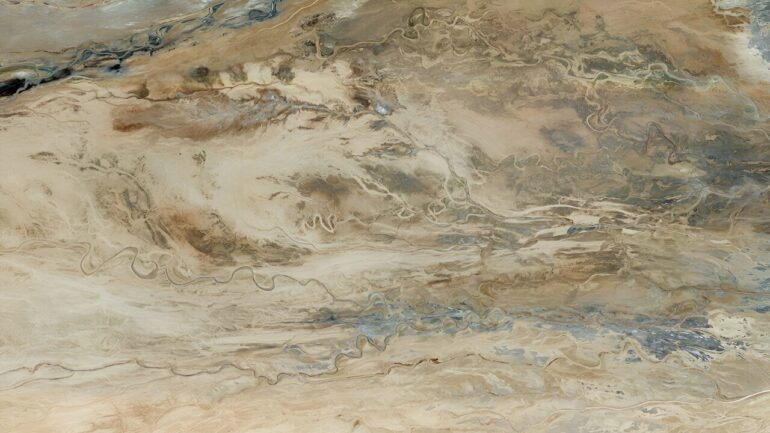Geologists have long thought that meandering rivers, with their gently swooping banks, are a geologically recent feature. According to the rock record, these rivers began proliferating around 450 million years ago in the Silurian period, coinciding with the spread of plants on land. The prevailing idea was that plants would have stabilized riverbanks, leading water to flow in concentrated, meandering channels rather than forming chaotic braided river systems in loose sediments.
But a growing body of literature is challenging this idea. Meandering-style rivers have been found in barren landscapes on Earth, and similar features have been spotted on Mars. Physical modeling has shown that single-channel rivers can form in fine sediments alone. And some studies have found Proterozoic fluvial deposits with low slopes, dunes, and deep channels similar to modern meandering rivers.
Now, Jeffery Valenza and colleagues present the oldest evidence yet that plants may not be necessary for meandering rivers to form. The researchers studied 1.2-billion-year-old river deposits preserved in rocks of the Stoer Group in northwestern Scotland, analyzing sediment composition, riverbed features such as dunes and ripples, and channel geometry. Their paper is published in the journal Geophysical Research Letters.
The researchers found that the river sediments were likely deposited in sinuous 4- to 7-meter-deep channels with gentle downslope gradients like those of modern meandering rivers. The presence of dunes at the river’s bottom suggested that channelized water flowed relatively quickly over the sediments. The team’s analyses of small-scale mud physics showed that a mix of sand and mud like that seen in the Stoer Group sediments could have been cohesive enough to hold a riverbank together—without the help of plants.
The seeming increase in the presence of meandering rivers in the Silurian could be explained by a drop in the average speed of river migration thanks to bank-stabilizing plants, rather than by the sudden introduction of a new river shape altogether, the authors posit. If rivers prior to this time migrated quickly, the sediment deposits they left behind could look similar in the rock record to those left by braided rivers, potentially leading scientists to misinterpret them as signs of braided systems.
As evidence of similar river geometries in other Proterozoic deposits builds, further understanding how these rivers formed is increasingly important, according to the authors, who are planning flume experiments to explore how a meandering river can leave deposits that mimic those of a braided river.
More information:
Jeffery M. Valenza et al, Pre‐Vegetation, Single‐Thread Rivers Sustained by Cohesive, Fine‐Grained Bank Sediments: Mesoproterozoic Stoer Group, NW Scotland, Geophysical Research Letters (2023). DOI: 10.1029/2023GL104379
Provided by
American Geophysical Union
This story is republished courtesy of Eos, hosted by the American Geophysical Union. Read the original story here.
Citation:
Mud could have made meandering rivers long before plants arrived (2023, August 1)
